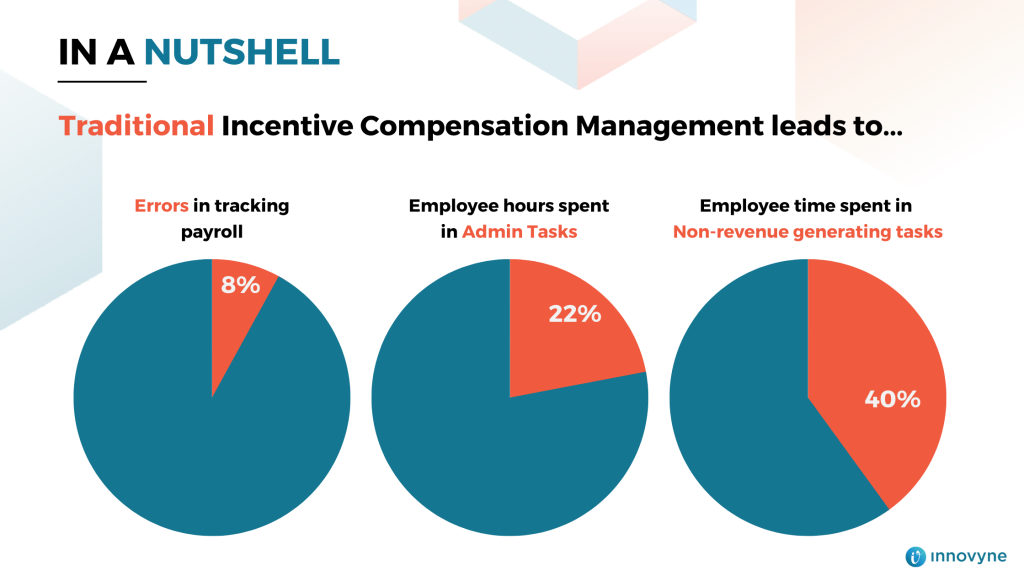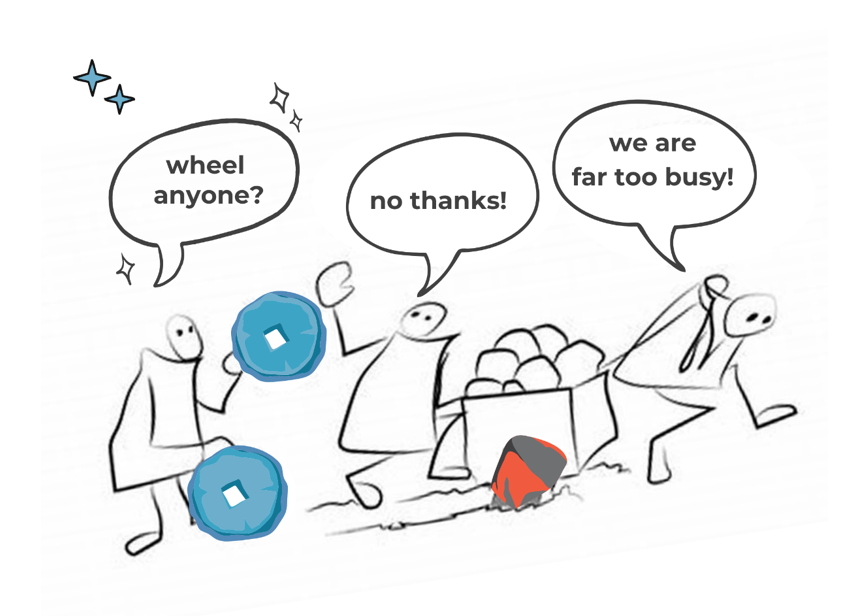Before you can be ready to embrace a modern incentive compensation management (ICM) solution, it’s crucial to understand the costs tied to maintaining the status quo. Yes, there is a tangible investment involved in transitioning to an integrated solution. But have you considered the hidden costs of clinging to your traditional system? In this article, we delve into the seven hidden costs associated with home-grown incentive compensation management systems. From unexpected financial pitfalls to operational obstacles that slow your progress, understanding these hidden costs underscores why it’s essential to approach your incentive compensation management with a strategic mindset.
Before we dive in, let’s take a quick look at what is meant by traditional compensation management.
What is traditional incentive compensation management?

In the nascent stages of a business, compensation management might resemble a straightforward spreadsheet for tracking sales, expenses, and commissions. However, as the business evolves, so does the complexity of this system. It begins with additional tabs for various product types, formulas for diverse tax and commission rates, and expands further from there. Before long, different types of data are scattered across disparate spreadsheets and systems, and calculating payouts transforms into a manual, time-consuming reconciliation process. Every home-grown solution is a unique creature, tailored to the evolving needs of the business. Yet, they all typically share a common foundation: a reliance on spreadsheets, multiple systems, and manual processes. These attributes, while seemingly functional, are susceptible to errors and inefficiencies. As such, they conceal an array of hidden costs that can dampen your organization’s performance.
So, what are the overlooked financial sinkholes and operational challenges of managing compensation the traditional way? Let’s examine them together.
7 Pitfalls of Traditional Incentive Compensation Management
Errors
First, let’s consider the issue of errors. The APA (American Payroll Association) suggests that manual payroll systems can result in an error rate between 1% and 8% of total payroll. Applied to compensation management on a large scale, this not only affects the bottom line, but introduces delays and downstream frustrations. With added processes required to reconcile these errors, this ultimately introduces opportunities for more mistakes.
Disputes
Next, an obvious consequence of errors is dispute resolution. Gartner research reveals organizations that use an integrated ICM solution experience a 90% reduction in compensation inquiries. This is a result of fewer errors as well as better compensation transparency. With an in-house management system, the time, effort, and resources spent resolving these disputes are indirect costs that bear significant implications for sales efficiency and productivity.
Administrative Burden
Then there’s the issue of administrative burden. Research by Pace Productivity reveals that sales reps spend up to 22% of their working hours on administrative tasks. In fact, on average, non-revenue generating (NRG) activities make up more than 40% of their total working time. Given that sales professionals are typically driven by results, significant barriers to their objectives are likely to increase frustration and reduce job satisfaction.
Culture and Morale
This brings us to the issue of culture and morale. While this is more difficult to quantify, it’s long been established that way employees feel about their work bears enormous impact on their drive. Working with outdated systems can make individual tasks more difficult, making employees feel that their company is unwilling or unable to provide the support that they need. Moreover, this can contribute to employees feeling pessimistic about the company’s trajectory, which can lead to further underperformance and turnover.
Technical Debt
Another overlooked consequence of using a home-grown system is known as technical debt. Borrowed from the tech industry, this term refers to the gradual accumulation of additional costs and inefficiencies that invariably arise from using outdated systems. Spreadsheets have the propensity to grow in volume and complexity as your business matures. Additionally, having data across multiple systems similarly complicates your operational processes. The more convoluted the processes, the more difficult it can be to change. This is why businesses may be reticent to adopt a solution, even if doing so will ultimately improve their systems. The comic below helps drive this point home.

Legacy System Syndrome
This brings us to the issue of Legacy System Syndrome. This is a term coined to underscore the risks associated with relying heavily on specific individuals with unique expertise. Older, bespoke systems come hand in hand with a dependency on select individuals who are often the only ones proficient at running them. This inevitably creates single points of failure within your organization. Consequently, if a key individual becomes unavailable or experiences burnout, it can disrupt business operations. If there is attrition, the cost can be quite hefty.
Opportunity Costs
Perhaps the most insidious hidden cost of maintaining a legacy compensation management system lies in the opportunity cost associated with stifled growth and innovation. In our increasingly globalized business landscape, staying competitive is more crucial than ever. This necessitates a focus on continuous innovation and strategic development. However, the cumbersome nature of legacy systems can absorb excessive time and resources, acting as a barrier to these crucial activities. The result? A slow but steady erosion of your competitive edge. The time spent managing outdated systems is time not spent on fostering growth or outpacing your competitors. While not immediately measurable, this cost can have substantial long-term implications.
Evaluating Your Home-Grown Sales Management System: An Overview
The hidden costs of adhering to a traditional incentive compensation management system extend far beyond financial implications. They touch every aspect of your business, from productivity and morale to growth and innovation. As this article illustrates, each hidden cost presents its own set of challenges, and together, they form a formidable barrier to your business’s potential for success.
While the comfort of familiarity can make legacy systems appear less daunting, it’s essential to recognize the cumulative burden they impose. Errors, disputes, administrative burdens, a dent in morale, technical debt and more represent the unseen tolls that can stifle your business’s growth and dampen its competitive edge.
Therefore, as you evaluate your current compensation management system, look beyond the initial investment of adopting an integrated solution. Consider the costs of maintaining the status quo and the value of the opportunities that such a transition presents. By doing so, you can make a strategic decision that could transform not just your compensation management, but your organization’s larger trajectory towards success.
How to Choose the Right Sales Management Solution
The market is awash with various software solutions designed to streamline incentive compensation management, sales and quota planning, territory management, and more. Some of these tools offer a more straightforward setup but may lack scalability as your business grows. Others, while offering a high degree of sophistication and flexibility upfront, might require substantial resources and expertise to integrate effectively. The key is to identify a solution that aligns with your business needs, constraints, and future plans.
But selecting the right software is only half the battle. Implementation is just as critical, if not more so. The reality is that if you’re using a home-grown system to manage compensation, just about any purpose-built software would be an improvement. What’s more, it doesn’t require much expertise to pay the licensing fee and get started. However, knowing how to leverage the software’s potential to drive your current and future business objectives is another question entirely.
That’s where professional consultancy services like InnoVyne come into play. Our approach is centered around understanding your unique business needs and processes. With flexibility and scalability built into every model we deploy, we also make sure we’re available to you as your business evolves. From routine maintenance and administrative assistance to testing, to full-scale development, we will continue to offer support because we will understand your business systems from the inside out. With InnoVyne, it’s not just about having the right tools—it’s about ensuring you know how to wield them for maximum impact.



